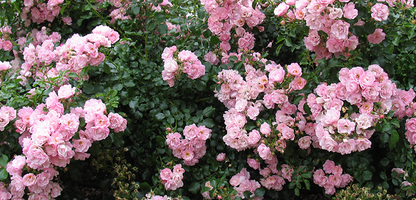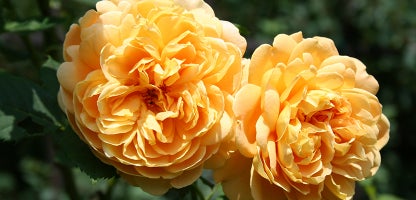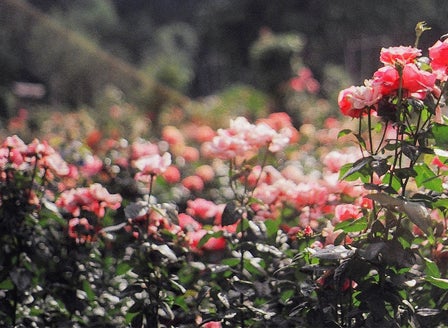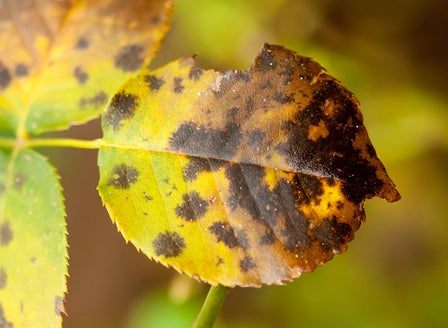Incorporate classic blooms into your garden with a beautiful rose. From gorgeous colours to exquisite fragrances, roses are so rewarding and easier to grow than you may think. If you’re just getting started, Iceberg and carpet roses are a good place to start as they are disease resistant and low maintenance.
Planting Calendar
New seasons Roses arrive in store from June. Roses are best planted in winter, however they can be planted right through spring.
Prepare
New season roses arrive instore from June. Choose healthy looking plants with strong, outward-facing canes. Some varieties require less care, which makes them perfect for beginners. If you are just getting started Iceberg and carpet roses are a great place to start. They are both disease resistant and can handle a bit of neglect. David Austin roses have been bred to be disease resistant and can flower multiple times a year, to top that off many of them have exquisite scents.
Position
Roses are best planted in a sheltered position that gets full sun.
Soil
When planted into the ground Roses like a free draining soil that is rich in organic matter. To improve the organic content in your soil, break up the soil and add Kings Compost and Kings Sheep Pellets then mix together well. When growing in containers, plant into Kings Container mix. This mix contains added water storage crystals and Saturaid, two products that help maintain moisture in the soil.
Plant
When planting into the ground, gently tap the plant out of its pot. Dig a hole twice the depth and width of the plants root ball. Mix Kings Compost into your existing soil at a 50/50 ratio, add Sheep Pellets and Kings Rose Food, then mix together well. Back fill the hole with this soil, so that when planted the top of the plant’s roots sit level with the surrounding ground. Firm the soil down gently and water in well with Aquaticus Organic Garden Booster. In heavier clay soils, where drainage is likely to be an issue, plant onto a raised mound and sprinkle Gypsum Clay Breaker into the bottom of the hole, this helps slowly condition the soil and will help to break down the clay. When planting into containers, plant in Kings Containers mix, as this has water retention crystals in it, which will help in keeping the soil moist. Firm the soil down gently and water in well with Aquaticus Organic Garden Booster.
Care
Watering
Water slowly allowing the water to sink down into the roots, rather than allowing it to run off the top of the soils surface. Add Saturaid into the soil at planting as this will help channel the water deep down into the root zone. If planted in pots never allow the pot to sit in water. Watering deeply 3 times a week is better than a little and often.
Feeding
Keep your roses well fed to ensure they stay happy, healthy, and full of flowers. Feed with Kings Slow Release Rose Food in spring, summer and autumn. In addition liquid every month with Aquaticus Garden Booster, from spring through to the end of autumn, this encourages root growth and increases the microbial activity in the soil. Monthly applications of Kings Sheep Pellets will help with soil conditioning and plant health.
Protecting
Provide standard roses with a strong stake to support the stem and hold the rose upright. Having a regular spraying program will help prevent pest and diseases from infecting your roses.
Mulching
Mulch around the base of the plants (make sure that the mulch does not come into direct contact with the stem of the plant) with Living Earth More than Mulch. Mulching helps to reduce weeds as well as aiding the soil to retain moisture.
Spraying
Spraying as a preventative measure will give better results than reactively treating once the pest or disease is active. In winter after leaf fall spray with Lime Sulfur, this will clear up any over wintering spores on the plants and treat any scale insect as well. At bud burst spray with a copper spray to prevent any diseases. Throughout spring, summer and autumn spray for pests with either super shield or rose gun. Repeated spraying will be required.
Pruning
Roses should be pruned in June/July each year. Start by removing any dead, damaged, diseased or weak spindly growth. Cut main branches back (on an angle facing away from the bud) to a strong outward facing bud leaving 4 strong branches forming a vase shape.
General Care
When using sprays, chemicals or fertilisers always read the label and follow the instructions. Apply sprays in the evening to avoid harming beneficial insects.
Beginner Tip
If you need to move any roses, cut them back by a third and dig out as large a root ball as you can manage. Make sure you keep your plant well watered until it recovers. This is best done when dormant during Winter.
Expert Tip
In June (before pruning) spray with Yates Lime Sulphur this will clean up any fungal spores or insects pests. Take care as Lime Sulphur will stain fences and pavers. Do not spray with others sprays until 3 weeks after using Lime Sulphur.
Tip
Deadhead old flowers to encourage new growth and repeat flowering. Cut back to the closest leaf that has 5 parts to it, to keep the bush tidy and encourage strong blooms in the future.
Top Varieties

Bush Rose
Roses that grow to a medium bush shape. Most varieties are pruned into an open vase shape to keep them happy and healthy.

Climbing Rose
Best trained to climb up walls, archways, pergolas or other upright structures.

Standard Rose
Bush or trailing rose varieties that have been grafted onto a single upright stem.

Carpet Rose
Easy care, low growing roses that work great as ground covers.

Floribunda Rose
Roses that produce clusters of blooms from a single stem, great for cut flower arrangements.

Hybrid Tea Rose
Each flower is born upon a single stem, perfect for bouquets.

Old Fashioned Rose
Older varieties of roses. They often look and smell amazing but tend to have a shorter flowering period than modern hybrids.

David Austin Rose
Roses bred by renowned English rose breeder David Austin. His varieties often incorporate the best characteristics of old fashioned roses and modern hybrids.
Frequently Asked Questions
Can I prune roses in summer?
A light prune in summer is fine, especially if you are dead heading old flowers, cutting out diseased wood or opening the plant up to better airflow. Just leave the hard pruning until mid winter. When dead heading cut the stem back to a nodes that has 5 leaves on it as this is where the plants will put out new shoots and flowers.
How often should I water my roses?
Water slowly allowing the water to sink down into the roots, rather than allowing it to run off the top of the soils surface. Add Saturaid into the soil at planting as this will help channel the water deep down into the root zone. If planted in pots never allow the pot to sit in water. Watering deeply 3 times a week is better than a little and often.
How do I fertilise my roses?
Keep your roses well fed to ensure they stay happy, healthy, and full of flowers. Feed with Kings Slow Release Rose Food in spring, summer and autumn. In addition liquid every month with Aquaticus Garden Booster, from spring through to the end of autumn, this encourages root growth and increases the microbial activity in the soil. Monthly applications of Kings Sheep Pellets will help with soil conditioning and plant health.
How do I prevent pests and diseases in my roses?
Regularly inspect your roses for pests like aphids, spider mites, and diseases like black spot and powdery mildew. Use organic insecticidal soap or neem oil for pests, and ensure good air circulation around the plants to reduce disease risk.
When is the best time to plant roses?
The best time to plant roses is during the winter months, from June to August, when the plants are dormant. This allows them to establish roots before the growing season.


